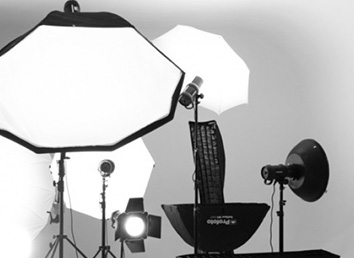The Difference Between Humanistic Photography and Documentary Photography
Author: Jeery
Date Created: 2022-10-27 10:36
The English name of humanist photography can be found on Wikipedia. It is mentioned on the Wikipedia page that it emerged in the mid-20th century as a worldwide movement and that, unlike photojournalism, humanist photography constitutes a subcategory of journalism because it focuses more broadly on everyday human life - hobbies, customs, and the like - than on newsworthy events. And it tends to focus on these lower-class people who would be disadvantaged by conflict, economic hardship, or prejudice. You see, it still has this sense of humanitarian concern. I've posted the original Wikipedia paragraph explaining this below, so you can read it if you're interested.
"Humanist Photography, also known as the School of Humanist Photography, manifests the Enlightenment philosophical system in social documentary practice based on a perception of social change. It emerged in the mid-twentieth-century and is associated most strongly with Europe, particularly France, where the upheavals of the two world wars originated, though it was a worldwide movement. It can be distinguished from photojournalism, with which it forms a sub-class of reportage, as it is concerned more broadly with everyday human experience, to witness mannerisms and customs, than with newsworthy events, though practitioners are conscious of conveying particular conditions and social trends, often, but not exclusively, concentrating on the underclasses or those disadvantaged by conflict, economic hardship or prejudice. Humanist photography "affirms the idea of a universal underlying human nature". Jean Claude Gautrand describes humanist photography as: a lyrical trend, warm, fervent, and responsive to the sufferings of humanity [which] began to assert itself during the 1950s in Europe, particularly in France ... photographers dreamed of a world of mutual succour and compassion, encapsulated ideally in a solicitous vision.
Photographing on the street or in the bistro primarily in black‐and‐white in available light with the popular small cameras of the day, these image-makers discovered what the writer Pierre Mac Orlan (1882-1970) called the 'fantastique social de la rue' (social fantasticality of the street)[5] and their style of image making rendered romantic and poetic the way of life of ordinary European people, particularly in Paris." © Wikipedia
In fact, in real life, in discussions with photographers, the term humanistic photography is quite common. It has a special category called humanistic photography in many competitions and exhibitions. I think it takes pictures of human culture and traces of human civilization activities, and it does pay more attention to the living conditions of human beings in less developed areas or the living conditions of some folklore and ethnic minorities, which is not a problem. The main issue here is the relationship between photojournalism and documentary photography. The Wikipedia explanation says it is a subcategory of photojournalism, but I don't think that is quite right. Because one of the important attributes of photojournalism is to shoot big events, humanities photography often has no events to speak of, so I think it cannot be classified as a subcategory of photojournalism; it should be another category parallel to photojournalism.
But the relationship between it and documentary photography is even more ambiguous. I have also encountered people asking me: Are you a humanities photographer? If I am familiar with them, I may explain more to them, but if I am not familiar with them, I may admit it; I just say: I am, I am. But in the Chinese photography circle, in the context of our usual conversation, I think there is a very obvious difference between humanities and documentaries; that is, many humanities photography photos are actually taken during the journey. That is, the photographer is experiencing a trip-like thing and then uses the camera to record what he sees and hears - some may be a little superficial, some may be a little deeper, but generally speaking, they are actually passing through people's villages, which is such a feeling. It is a relatively short shooting time, relatively shallow understanding, and may be more concerned with some relatively more visually presentable things, or in other words, more superficial things - but I note here, this is not derogatory; it is more concerned with those things that can be seen.
The first thing about documentary photography is that it has to be very carefully planned before shooting - to start the subject and then figure out how to shoot it and how long to spend on it. The second is that it sometimes takes significantly longer to shoot than humanistic photography. Students who are familiar with me know that my longest project took nearly two years, which was to shoot a girl, a life in the North. In addition, when I shoot documentary photography projects, I will try to be as profound as possible, and I will need to have a lot of thinking in it so that the final expression is not only a simple record but also more understanding of the world.











